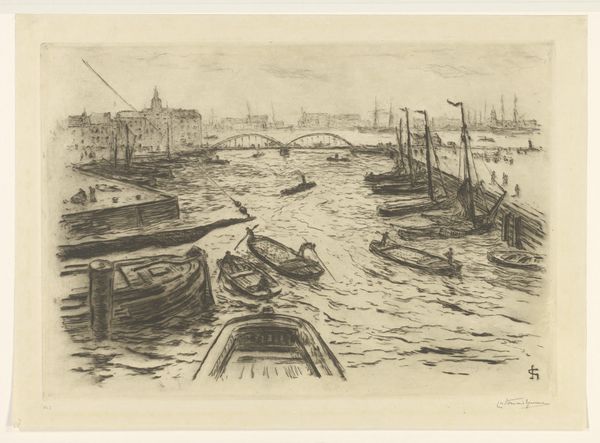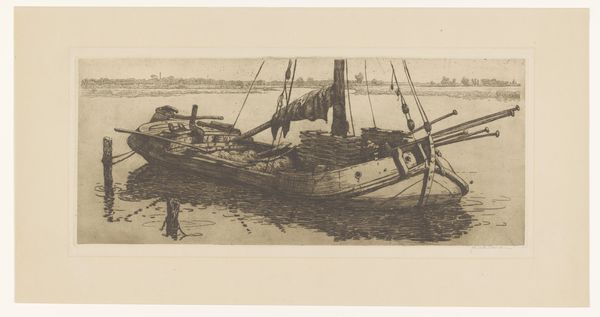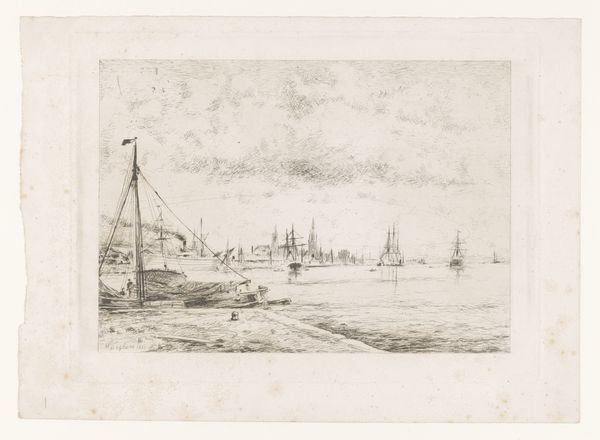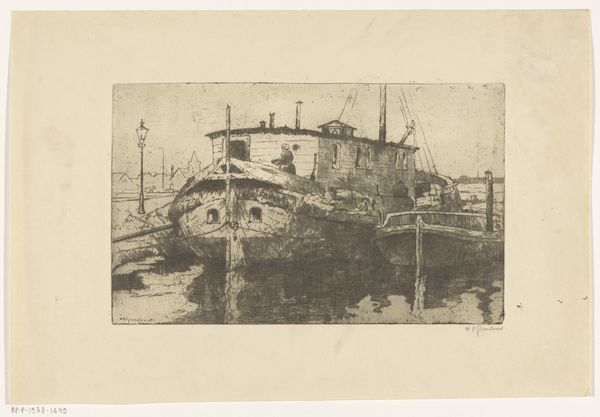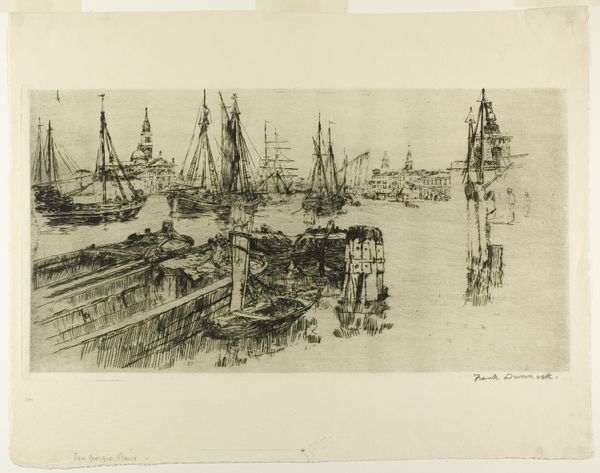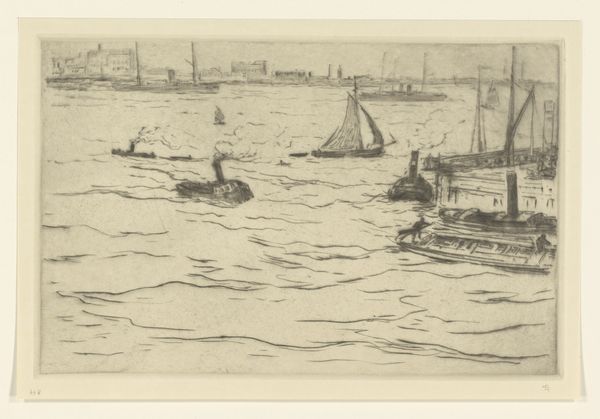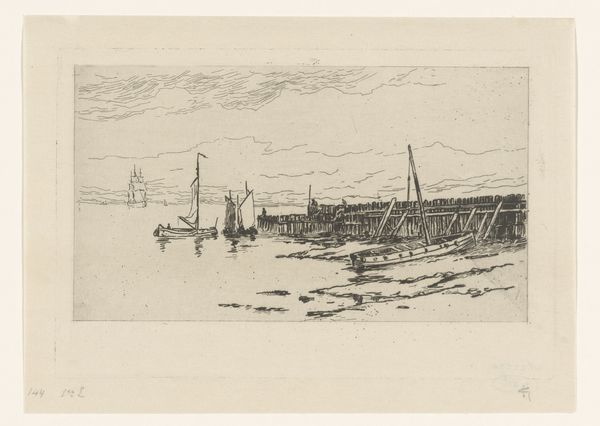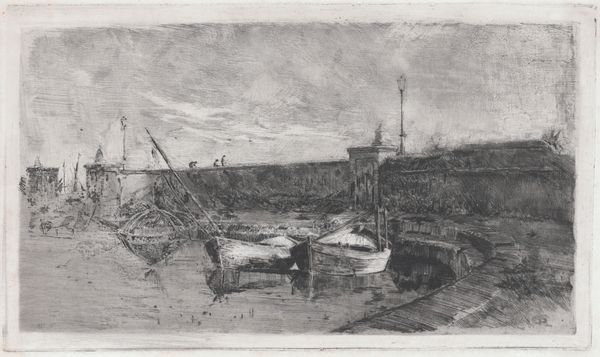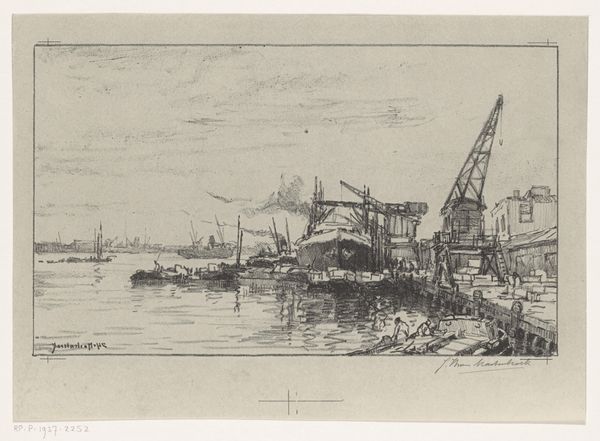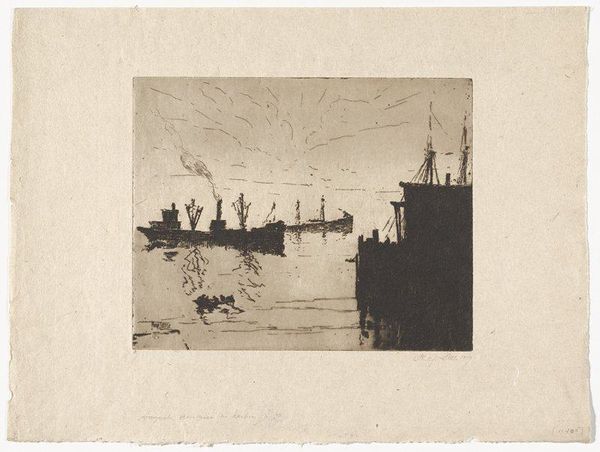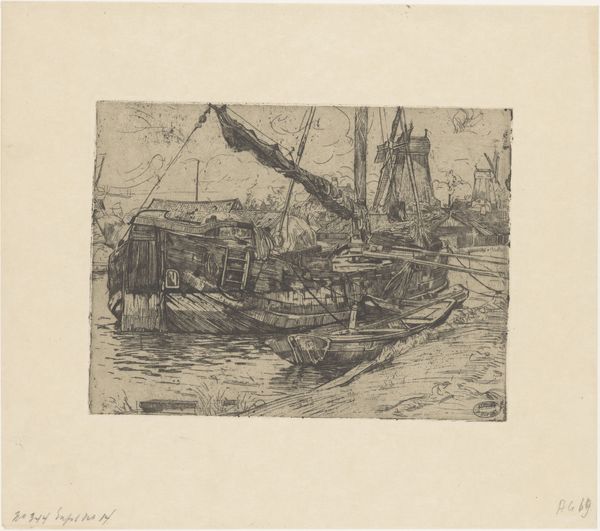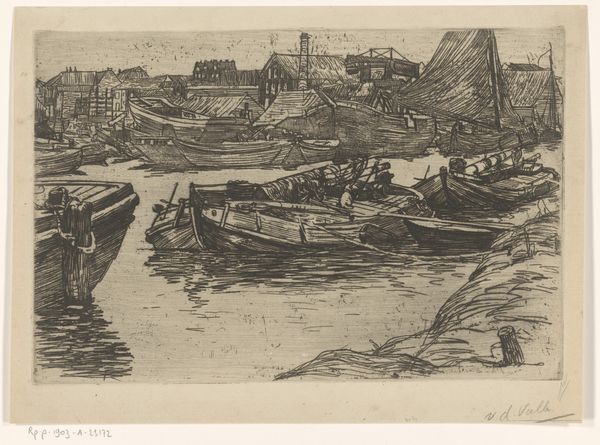
print, etching
# print
#
etching
#
old engraving style
#
landscape
#
etching
#
cityscape
#
realism
Dimensions: height 138 mm, width 198 mm
Copyright: Rijks Museum: Open Domain
Editor: This etching, “Haven met sleepboten in Rotterdam,” made in 1898 by Pieter Dupont, is incredibly detailed. It has a chaotic feel because the artist used so many tiny, scratchy lines, but also a stark beauty due to its high contrast. What stands out to you? Curator: As a materialist, I find the medium—etching—particularly significant. The labor-intensive process, the artist’s hand physically impressing lines into the metal plate, directly speaks to the era's industrial energy. The image celebrates Rotterdam as a center of trade and production, showing the tugboats alongside older sailing vessels. Dupont isn't just depicting the harbor; he's capturing the transformative power of industry and how human labor drives it. Notice how the etching lines are used, creating texture that evokes both the movement of water and the sooty atmosphere of a working port. What do you think he might be saying about labor, through the image? Editor: I guess you could say it’s celebrating it, or at least acknowledging its presence. Those tugboats are powerful, but they also rely on human skill, on someone creating them and steering them. Was Dupont intentionally elevating industry, or just reflecting what was around him? Curator: It's likely a bit of both. The etching process itself, involving precise skills and chemical reactions, mirrors the complexities of industrial production. Dupont likely intended to show the modernity, and even possibly highlight the growing middle class that propelled consumer culture during this period. I see the boats not only as representations of industrial progress but also commodities and how they play into a new global economy. How do you see the role of printmaking in distributing such an image to a broader audience? Editor: That makes sense. It’s almost like a form of advertising, highlighting Rotterdam's place in the world. Plus, because it's a print, it would've been much more affordable and could have been owned by someone not in the upper class, perhaps further enhancing that sense of widespread modernity. Curator: Exactly. Considering how labor shapes art both in its making and what the art depicts definitely gives us a fuller perspective here. Editor: This changed how I think about prints of landscapes; this discussion made it come alive and make me appreciate them in a fresh way. Thanks.
Comments
No comments
Be the first to comment and join the conversation on the ultimate creative platform.


